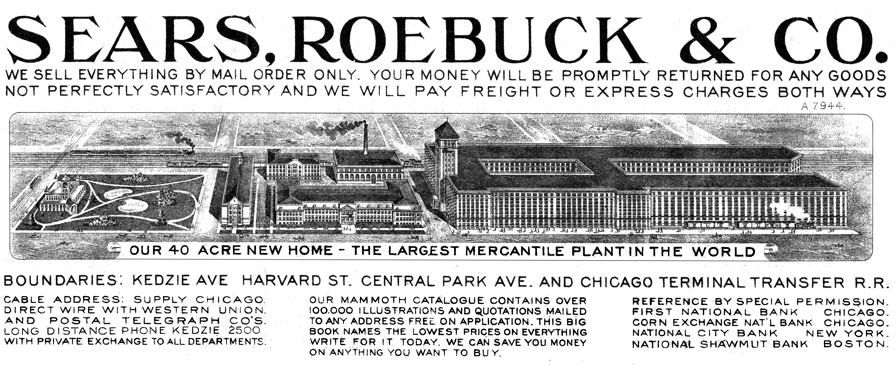|
1.
Mechanization changed farms
Mechanization means the increasing use of machines. One example of mechanization on farms is the mechanical reaper shown in the photo. It was invented by Cyrus McCormick in 1831 to harvest wheat. The machine was in use on farms by the 1850s, and was especially useful on the large wheat farms of the Great Plains. |

|
That
reaper did the work of 6 men!
The mechanical reaper could harvest wheat about as fast as six men using the hand held cutting blades shown in this photo. So mechanization decreased the need for labor (workers) on farms, while allowing farms to produce even more food than before. |

|
The result:
farms could grow larger
The photo shows a very large mechanical reaper in a wheat field around 1900. Notice how large this farm is. It is much larger than could be easily handled without the help of machines. (Tractors were just beginning to replace work horses about this time.) |

|
2. Factories grew larger
|

|
3. Cities
grew as industry expanded
Cities were growing very rapidly as a result of industrialization. Factories usually located in cities. That increased the demand for labor (workers) in cities. Americans - including millions of new immigrants - moved into cities looking for jobs and better opportunities. This photo shows a downtown Chicago street around 1900. Notice the trolley on the tracks in the street, and the fact that horse-drawn wagons and carriages were still common. Automobiles would begin appearing just a few years later. |

Click here to see a larger version of this photo
|
4.
Railroads helped create national markets
 Railroads played an
important part in all of this growth and change. Here's why: Railroads played an
important part in all of this growth and change. Here's why:
|

|
5.
Consumers had more access to
better products at lower prices The changes on farms and in factories helped improve life for most Americans dramatically. Industrialization gave consumers (shoppers) access to more and better products than their grandparents had ever dreamed of. The photo shows a large department store in Philadelphia in 1905. By that time, there were also businesses like Sears, Roebuck & Co. that were selling products all over the country through mail order catalogs. |

Click here to see a larger version of this photo
|
A new way to shop: the Sears mail order
catalog
The Sears company you know today was started in 1893 as a mail order business. The company printed catalogs that customers could get by mail, then flip through the pages to see the thousands of items the company sold. The catalog included everything from sewing machines to toys, tools, books, furniture, clothing, and more!  The customer filled out an order form, and sent it together with the payment by mail to Sears. The company warehouse in Chicago sent the items directly to the customer by mail. This was great for people in small towns and farm areas, where the local stores often had higher prices and not much selection. The local stores, of course, were not happy about the mail order catalogs, because people were often ordering products by mail rather than shopping locally. The page shown below is from the 1899 Sears catalog. |

The photos and Sears catalog page are from the Library of Congress.
The Sears warehouse image and the railroad car images are public domain graphics courtesy Wikipedia.
Some images have been edited or resized for this page.
|
Copyright Notice
Copyright 2010, 2017 by David Burns. All rights reserved. As a guide to the Virginia Standards of Learning, some pages necessarily include phrases or sentences from that document, which is available online from the Virginia Department of Education. The author's copyright extends to the original text and graphics, unique design and layout, and related material. |